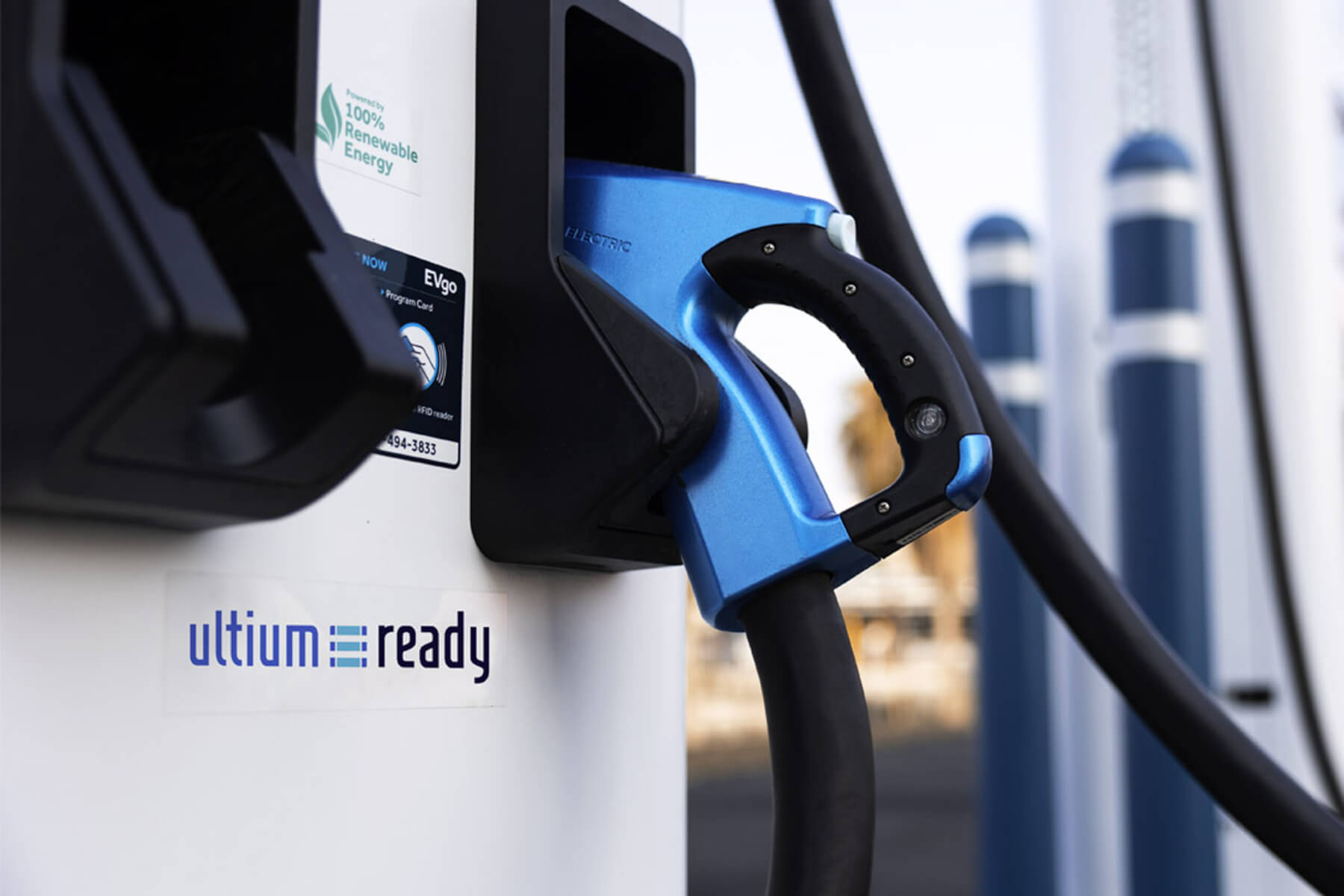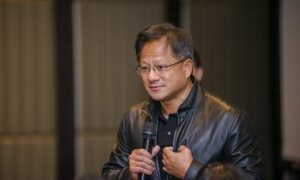General Motors is joining forces with EVgo and Pilot Travel Centers on a mission to spread the love of electric vehicle chargers — 500, to be exact. The project’s completion will signal a massive shift in fueling accessibility for EV owners, potentially changing the game for how many people decide to purchase an EV as their next car. How else will this handful of GM electric charging stations disrupt an already disruptive industry?
Background on GM Electric Charging Stations
GM announced in 2022 that it would install 2,000 charging ports at up to 500 Flying J truck stops so there’s a charger every 50 miles. Many are fast chargers, promising 200 miles of range within a 10-minute session. The stalls have capacities of around 350 kilowatts. They will have Pilot’s branding alongside GM’s name for the product, which is inspired by its proprietary battery technology, Ultium Charge 360.
The Pilot Flying J EV charging project is part of an initiative called New Horizons. The company is putting its money where its mouth is when committing to sustainability — the whole thing will cost $1 billion in infrastructure improvements. This is in addition to other upgrades to its facilities, with chargers being a highlight.
At the end of 2023, Flying Js had around 25 GM electric charging stations with 100 stalls for thirsty EVs. A couple hundred more will hit stops by the end of 2024. EVgo will power them all, making it an industry leader for the national charging network.
This is transformative news from a veteran car manufacturer. It shows that no matter how long a maker has been in the game, it embraces novelty and innovation just as a startup can. The willingness to invest is critical for convincing long-term GM brand loyalists to support electrification and eco-friendly transportation despite affinities toward internal combustion engines.
Are There Charging Stations Near Me?
The aim is for every charger to be within 50 miles of another. Unfortunately, this doesn’t mean they are evenly dispersed across the U.S., but most regions are well-covered.
The plan has a map of where the intended chargers will be. The Midwest and Pacific Northwest are notably scarce in their density, whereas the East Coast has more to work with. These reasons are why there might not be as many charging stations near you as in other states.
Pilot locations are the first consideration. Regions without a Pilot will not receive one of GM’s chargers. It’s possible more locations will break ground if this project is successful, but it is hard to tell if EVs will be an assumed luxury of new builds.
Additionally, the locations coincide with major cities and roadways. Pilots are truck stops, so it makes sense to see more charging stations in a fleet’s path than other commuter routes. For example, the map signals a long string of chargers along Interstates 80 and 84 out west, with few to no chargers in and around Montana, Nebraska and Nevada.
How Will This Influence EV Adoption?
Every installation of a charging station alleviates EV woes by a small percentage. However, this historic collaboration will do more to EVs’ reputations than others that have preceded it.
Reducing Range Anxiety
Modern research reveals fascinating analytics about range anxiety. First, the people who experience the most range anxiety are those who don’t even own electric vehicles yet. This number amounts to 76% of prospective EV purchasers. Additionally, Recurrent’s survey found that 78% of EV owners say range anxiety fades more the longer they own the car.
These two data points are critical to combat negative publicity around charging access. Many struggle to overcome this mindset, and expanded charging infrastructure is the gateway to quelling stress.
Increasing Competitiveness
Tesla Superchargers are the most common station on the market. GM’s plan will diversify the available portfolio. The more manufacturers that enter the playing field, the faster stations will appear. This is because companies will get increasingly competitive as space disappears to put their brand on a gas station’s chargers.
Validating Third-Party Collaborations
Tesla owns its charging network, but that doesn’t make GM’s infrastructure less influential. EV expansion may only happen if manufacturers work with external charging services and software providers. Not every maker can justify the expense, so why not outsource it while gaining the benefits and reputation boosts related to working with other industry leaders?
Reinforcing the Bipartisan Infrastructure Plan
The Biden-Harris administration issued $5 billion for five years to improve the U.S. grid and other critical infrastructure, including EV charging access. GM’s plan with Pilot and EVgo directly supports this legislation, proving it is the prime time to invest.
Private corporations and federal incentives are the perfect combination because they reduce upfront cost burdens. Level 3 chargers that support long-haul vehicles could cost thousands of dollars, making it pricey to install on-site hardware. Free, public access to convenient chargers because of this plan makes GM’s timing all the more perfect.
Electrifying Fleets
It’s a fortunate circumstance that Pilot owns truck stops because heavy-duty vehicles are gas-guzzling carbon emitters. Though commuter vehicles are another concern for the planet, decarbonizing the increasingly aggressive long-haul sector will do a world of good for a healing atmosphere.
This will open the market to a larger set of buyers, increasing EV sales even more than they have in the last couple of years. They have already risen 5% in the first months of 2024. Sales projections will balloon now that corporations can purchase trucks and haulers without fear of their operators having dead batteries on the side of the road.
GM, Pilot Flying J and EV Charging Make the Dream Work
Pilot Flying J EV charging will flip EV adoption in the best way. Though people might still frantically Google “charging stations near me,” search results will show how this number increases weekly in the U.S. because of projects like GM’s electric charging stations. It’s impossible to guess what company will feel inspired to make its mark in GM’s wake, but it will be equally exhilarating for disseminating electric, eco-friendly transportation.
Article contributed by Emily Newton.
About the author: Emily Newton is the Editor-In-Chief of Revolutionized, a magazine exploring innovations in science and industry that shares ideas to promote a better tomorrow. She enjoys writing and researching about how technology is changing the world.
Follow TechTheLead on Google News to get the news first.























